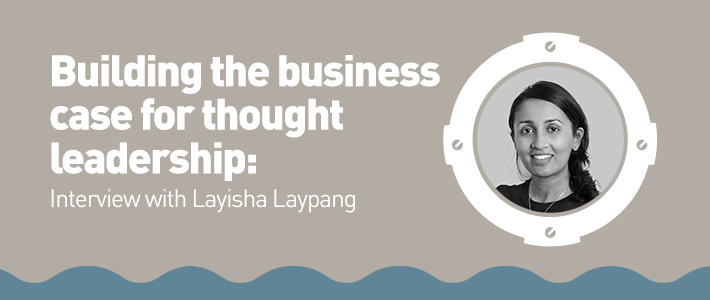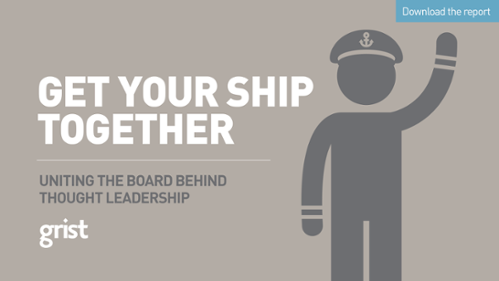In this instalment from our interview series on building the business case for thought leadership, we hear from Layisha Laypang, PR & Communications Manager at Efficio, on how she attained approval and budget for their recent thought leadership programme.
What was the biggest challenge you faced when introducing thought leadership?
When I joined the company there was already considerable appetite for doing more content generally, including thought leadership in the form of surveys, white papers and other collateral. The challenge was keeping pace with this.
The priority as a new joiner was to review our existing activity to determine whether what we were doing was right and where else we should be focusing our efforts. I already knew that we wanted to do a global flagship study of some description. The challenge was identifying the right topic – something that would promote our thinking but also resonate with the market – and getting the right people on board internally to help achieve this.
How involved was your senior management team in the process?
It was less about going to senior management to seek budget and resources. I already had an allocated budget for two issues of The Source, our global client magazine. By making one of these regular publications a special thought leadership issue, I could test the market’s appetite for our chosen subject for less cost than had we created an additional report.
Where we wanted senior management’s involvement – particularly that of our CEO’s – was to fully understand our business strategy as it related to our thought leadership topic and to ensure we were conveying the right underlying messages. Once the survey was complete, we sat down with our CEO to stress-test his opinions and define our core messages. We also involved internal representatives from our key markets in Germany and the US to provide regional viewpoints and to ensure they were ‘bought-in’.
What do your senior executives see as the benefit of thought leadership?
In my view, our senior executives see thought leadership as far more than a marketing and business development tool. We have chosen technology as our topic because it’s an area where we see significant growth opportunities. A key differentiator for us as procurement practitioners is the ability to build and use technology to support our clients. We have more than 400 consultants who have collectively amassed a huge pool of knowledge from projects across sectors and geographies. Our thought leadership helps us share this knowledge to drive, influence and shape the market.
That’s not to take away from the brand building and business development opportunities that this piece of work brings. But to be able to voice our view on this evolving, dynamic part of the industry, based on our survey findings and own first-hand experiences, is a major opportunity.
What advice would you give others looking to develop their own programmes?
Don’t view thought leadership as a marketing-owned activity. It’s irrelevant who holds the budget. It should be a company or sector-wide initiative (depending on the topic) with everyone invested in the outcome. That said, keep the actual working group lean. The more opinions you source the longer things will take. Identify key milestones in the project and communicate these with the wider business, that way you’re sharing information without creating undue delays.
I’m lucky to work for a supportive company that trusts you to try new things and deliver the right outcomes. This empowerment encourages you to do more, better. Who knows what the next project will be?
For more tips and advice on how to sell-in thought leadership download our new guide 'How to get buy-in from the board for thought leadership'.



